Are Denatured Alcohol and Ethanol the Same Thing?
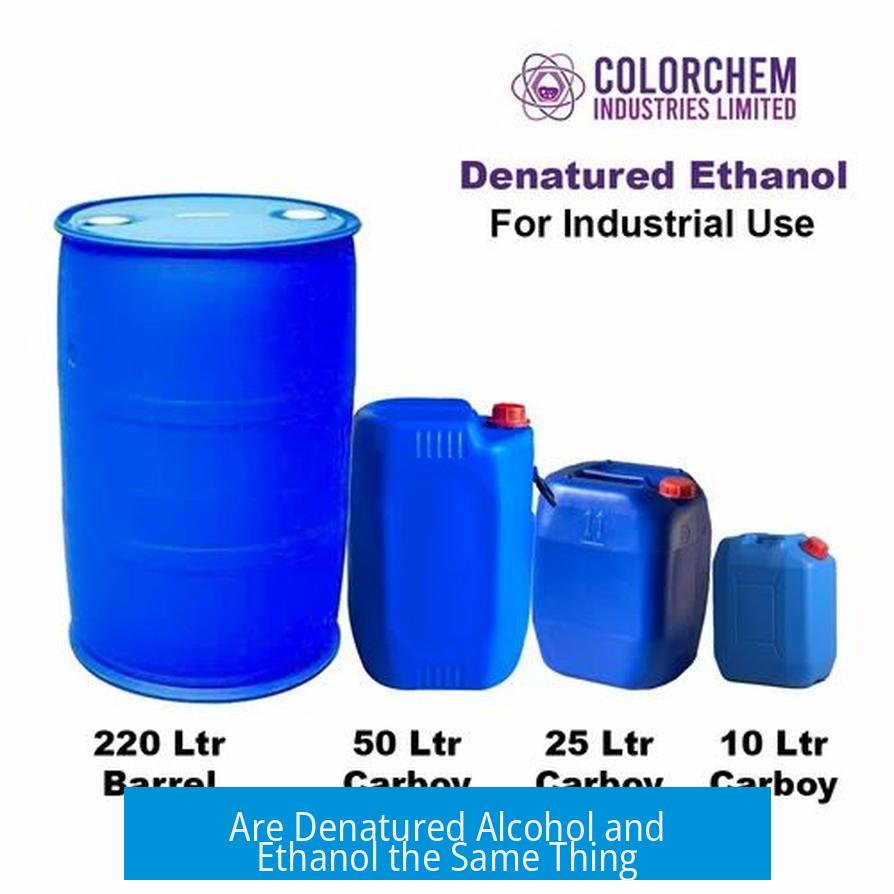
Denatured alcohol and ethanol are not the same, though denatured alcohol consists mostly of ethanol mixed with toxic additives. These additives make it undrinkable and exempt from beverage alcohol taxes. The difference lies primarily in composition, purpose, and safety.
Composition Differences
Both substances contain ethanol as the main ingredient. However, denatured alcohol contains other chemicals called denaturing agents, which vary by region and product.
- For example, Klean Strip brand denatured alcohol in the US includes at least 30% methanol, a poisonous alcohol.
- In some countries, denatured alcohol may contain about 10% methanol or other solvents like isopropanol or toluene.
- The exact chemical makeup depends on local regulations and the intended industrial use.
Purpose and Usage Differences
Ethanol is pure alcohol, often food-grade and used in beverages or medical applications. Denatured alcohol is intended for industrial purposes only.
- Denatured alcohol serves as a solvent, cleaning agent, or fuel for devices like alcohol stoves.
- It is deliberately made toxic to avoid drinking restrictions and taxes associated with beverage-grade ethanol.
- Food-grade ethanol, such as 190-proof Everclear (approx. 95% ethanol), is suitable for consumption when legally permitted.
Safety and Handling
Denatured alcohol is poisonous and must never be ingested.
- It is appropriate for cleaning but not safe for surfaces that will contact food unless thoroughly rinsed afterward.
- For cleaning food-related items, food-grade ethanol is a safer alternative.
- Proper labeling and caution are important to avoid accidental poisoning due to toxic additives.
Summary of Differences
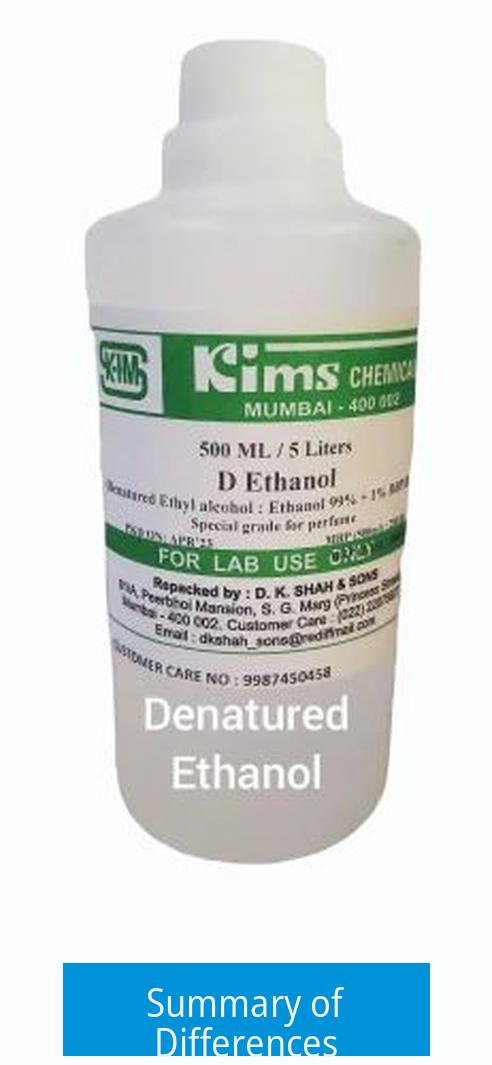
| Aspect | Ethanol | Denatured Alcohol |
|---|---|---|
| Main Ingredient | Alcohol (95-100%) | Mostly ethanol + toxic additives |
| Usage | Consumable, medical, beverage | Industrial solvent, fuel, cleaning |
| Toxicity | Safe if pure and food-grade | Toxic, contains methanol or other poisons |
| Regulation | Subject to beverage alcohol laws | Exempt from beverage alcohol taxes |
- Denatured alcohol contains ethanol but is chemically altered to prevent consumption.
- Its composition varies by region due to different denaturing agents and regulations.
- It is widely used for industrial purposes and fuel but is unsafe for drinking.
- Food-grade ethanol remains the standard for consumable alcohol applications.
Are Denatured Alcohol and Ethanol the Same Thing? Let’s Clear the Air
At first glance, you might think denatured alcohol and ethanol are the same — after all, denatured alcohol is mostly ethanol. But here’s the kicker: denatured alcohol has added toxic chemicals to make it undrinkable, so no, they are not exactly the same thing. That’s the short answer, but stick around because this topic gets pretty interesting.
Let’s break it down with some real talk about what’s inside these liquids, what they’re meant for, and crucially, how to handle them safely.
What’s Inside? Peeking Into the Chemistry
Ethanol is the alcohol you find in beverages, products, and lab-grade solutions. It’s generally “clean,” meaning no nasty surprises. Denatured alcohol, on the other hand, is ethanol that’s been “ruined” on purpose — chemically altered so you can’t drink it, usually by adding other solvents.
For example, the popular Klean Strip brand denatured alcohol used in the US contains a minimum of 30% methanol, according to its Safety Data Sheet (SDS). Methanol is highly toxic and can cause blindness or even death if ingested. In other parts of the world, where regulations are laxer, denatured alcohol may only contain about 10% methanol.
Besides methanol, the cocktail of denaturing agents can include isopropanol (rubbing alcohol), toluene (a solvent with a gas station vibe), or other chemicals that make the mix poisonous and foul-tasting. For instance, a lab’s denatured alcohol might have 5% isopropanol, while another mix might have different ratios depending on local laws.
So, the composition significantly varies by country and purpose, but here’s the key takeaway: you won’t find these dangerous additives in beverage-grade ethanol.
Why Add Toxic Chemicals? The Purpose Behind Denaturing
You might wonder, “If denatured alcohol is toxic, why bother with it?” The answer is surprisingly practical. Governments impose hefty taxes on pure ethanol to regulate its consumption and prevent misuse. Denaturing alcohol stops people from drinking it (because, spoiler: it’s poisonous) and lets industries use it without tax burden.
What gets sold as denatured alcohol is mostly designed for industrial use—as a solvent, in cleaning, or as fuel for alcohol stoves. It fills niches where pure ethanol would be useful but drinking it legally or safely is not the goal.
If you are someone who needs food-grade ethanol, such as a food scientist, bartender, or hobbyist, your best bet is 190 proof Everclear (or similar products), which is roughly 95% ethanol and safe for consumption. But of course, check your local laws before grabbing a bottle!
Handling Them Safely: The Golden Rules
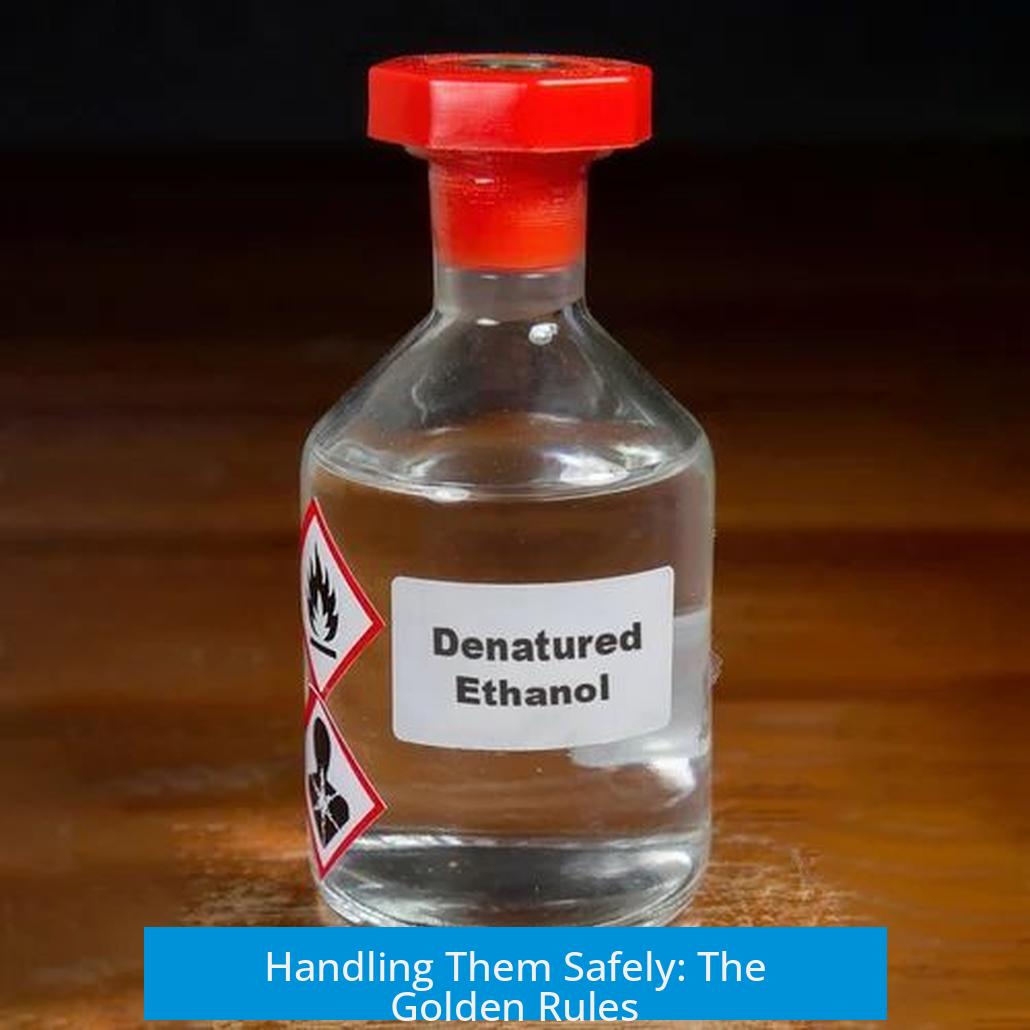
Knowing that denatured alcohol contains dangerous toxins is not just trivia—it’s a matter of health and safety. Remember: never drink denatured alcohol. Ever. It’s toxic and can cause severe health issues.
If you plan to use denatured alcohol for cleaning, it’s nearly perfect for tasks where you want a strong solvent but don’t care about ingestion safety. It evaporates cleanly and can remove varnish, paint, grease, and more.
But what if you need to clean tools or surfaces that interact with food? Use careful judgment. For those food-safe cleaning jobs, rinse surfaces thoroughly after cleaning with denatured alcohol, or opt for Everclear or another food-grade ethanol alternative to avoid chemical residues.
Practical Tip: When to Choose Which?
- Use denatured alcohol: for industrial cleaning, paint thinning, fuel for alcohol stoves, and other tasks not involving food or human consumption.
- Choose food-grade ethanol (Everclear): when you want a safe, pure alcohol for tinctures, culinary applications, or cleaning food-contact surfaces.
Let’s say you want to clean your fruit-infuser bottle. Using denatured alcohol might seem like overkill and risky due to toxicity. Instead, grab some Everclear or just good ol’ isopropyl rubbing alcohol marked safe for household use.
How Different Are They in Your Everyday Life?
Imagine you’re faced with a container labeled “denatured alcohol” in your garage and a bottle of “Everclear” in your kitchen. Both smell like alcohol, but their lives and purposes couldn’t be more different. Denatured alcohol is a bad guest who spoils the party with toxic additives, while pure ethanol is the friendly host ready to serve safely.
Think of denatured alcohol as ethanol’s “bratty sibling”—just close enough to cause confusion but far enough to be dangerous if mistaken.
In Conclusion—What Should You Take Away?
Are denatured alcohol and ethanol the same? Not quite.
Yes, denatured alcohol mostly contains ethanol, but it’s been mixed with toxic substances like methanol, isopropanol, or toluene to make it undrinkable and avoid alcohol taxes. These differences depend on where you live and the product formulations.
Use denatured alcohol for industrial and cleaning purposes only, with caution. If you need ethanol safe enough for food handling or drinking (legally), stick to food-grade options like Everclear.
Next time you pick up a bottle of denatured alcohol, think twice before tasting it or using it for anything ingestible. Treat it with respect and handling care, just like the dangerous chemical it is. Your health will thank you!
So, are they the same? No, but they share a big family resemblance. Knowing the difference keeps you safe, informed, and savvy in your alcohol choices beyond the bar.
Is denatured alcohol the same as pure ethanol?
Denatured alcohol contains mostly ethanol but also has toxic chemicals added. These additives, called denaturing agents, make it unsafe to drink.
Why is denatured alcohol treated with additives?
The additives prevent people from drinking it. This also lets sellers avoid alcohol taxes and regulations for beverage ethanol.
Can I use denatured alcohol for cleaning surfaces?
Yes, it works well as a solvent for cleaning. However, for food-contact surfaces, rinse thoroughly or use food-grade ethanol like Everclear.
Does the composition of denatured alcohol vary by location?
Yes, the type and amount of denaturing agents differ depending on local laws. Some have 30% methanol; others may have 5% isopropanol or toluene.
Is it safe to drink denatured alcohol?
No, denatured alcohol is toxic and should never be consumed. Only food-grade ethanol is safe for drinking.


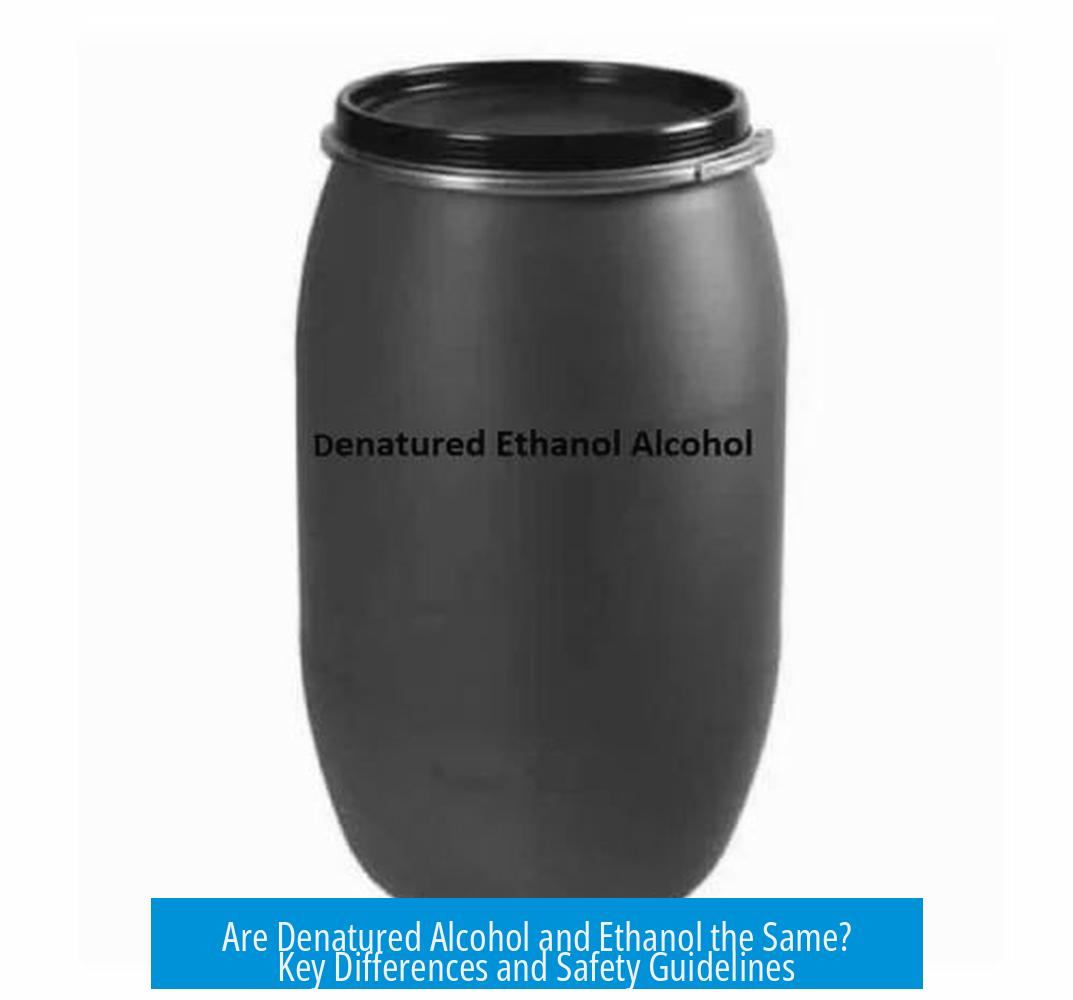
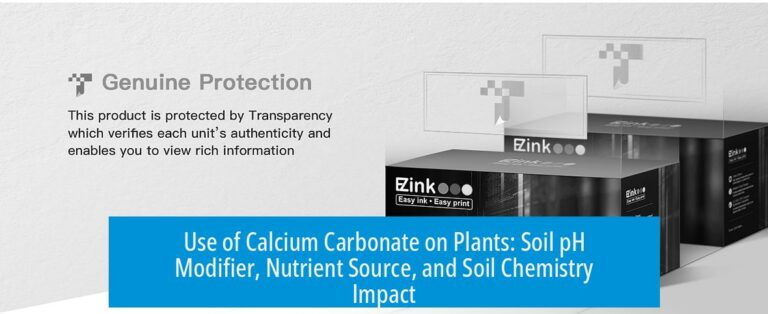

Leave a Comment